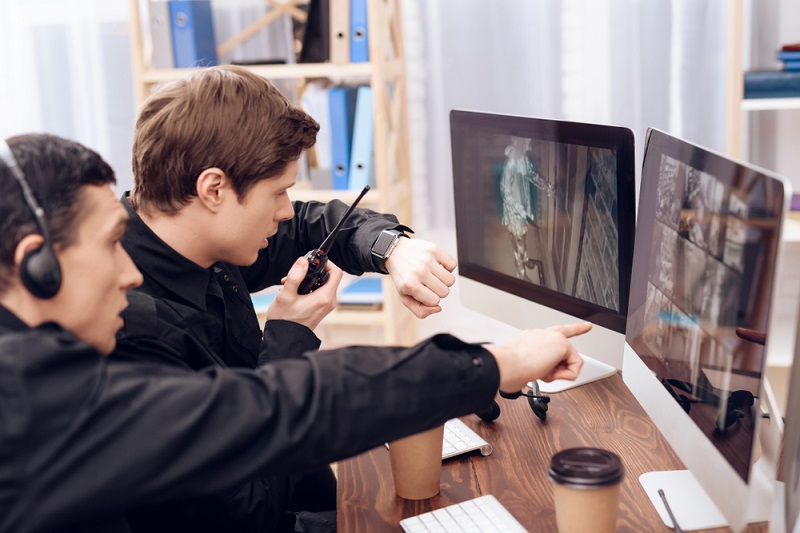
In our increasingly complex world, security guards play a vital role in maintaining safety and order in various environments—from shopping malls and corporate offices to schools and public events. While these professionals are tasked with protecting others, their own safety and well-being often go overlooked. This blog will explore the critical importance of security guard safety, the challenges they face, and effective strategies to ensure their well-being.
Understanding the Role of Security Guards
The Multifaceted Responsibilities of Security Guards
Security guards are often the first line of defense against potential threats. Their responsibilities may include:
- Monitoring Surveillance Systems: Keeping an eye on video feeds to identify suspicious behavior.
- Patrolling: Regularly walking or driving through premises to deter crime.
- Responding to Incidents: Acting quickly in emergencies, whether it’s a medical issue or a security breach.
- Customer Service: Assisting patrons, providing directions, or offering a calming presence.
The Importance of Security Guards
The presence of security guards can significantly reduce crime rates and enhance the feeling of safety among the public. Their ability to assess situations quickly and respond appropriately can prevent dangerous incidents from escalating.
The Risks Faced by Security Guards
Physical Risks
- Violence: Security guards often find themselves in confrontational situations, which can lead to physical altercations.
- Accidents: Working in environments with high foot traffic or hazardous conditions can result in injuries.
- Exposure to Dangerous Situations: Guards may encounter criminal activity, including theft, assault, or vandalism.
Mental Health Risks
- Stress and Anxiety: The nature of their work can lead to high levels of stress and anxiety, particularly in high-risk environments.
- Isolation: Guards often work alone during night shifts or in remote areas, leading to feelings of loneliness and depression.
Environmental Risks
- Weather Conditions: Guards working outdoors are exposed to various weather conditions, which can affect their health and safety.
- Inadequate Facilities: Some guards work in locations that lack proper amenities, impacting their overall well-being.
Strategies for Ensuring Security Guard Safety
Training and Education
- Comprehensive Training Programs: Ongoing training in conflict resolution, emergency response, and first aid can prepare guards for a variety of situations.
- Mental Health Awareness: Providing resources on mental health and stress management can help guards cope with the pressures of their jobs.
Safety Equipment
- Personal Protective Equipment (PPE): Guards should be provided with appropriate PPE, such as body armor, gloves, and communication devices.
- Emergency Tools: Items like pepper spray, first aid kits, and flashlights should be readily available.
Supportive Work Environment
- Team Structure: Encouraging teamwork can reduce isolation and improve morale among security staff.
- Open Communication: Establishing channels for guards to report concerns and share experiences can foster a supportive culture.
Health and Wellness Programs
- Physical Fitness Initiatives: Offering gym memberships or fitness classes can help guards maintain their physical health.
- Mental Health Resources: Providing access to counseling and stress-relief programs can significantly benefit guards’ mental well-being.
Technology Integration
- Surveillance and Communication Tools: Utilizing modern technology can enhance situational awareness and facilitate quicker responses to incidents.
- Mobile Apps for Safety: Developing apps that allow guards to report incidents or call for help can improve safety.
Case Studies: Effective Safety Measures in Action
Case Study 1: Retail Security
In a large retail chain, management implemented a comprehensive training program for security personnel that included de-escalation techniques and mental health awareness. As a result, incidents of violence against guards decreased by 30%, and employee satisfaction improved.
Case Study 2: Event Security
A major concert venue adopted a buddy system for security staff during events, ensuring that no guard was alone in high-risk areas. This initiative not only enhanced safety but also created a sense of camaraderie among the team, leading to improved performance.
Case Study 3: Corporate Security
A corporate office introduced wellness programs that included yoga sessions and stress management workshops. Guards reported lower stress levels and increased job satisfaction, resulting in higher retention rates.
The Role of Employers in Security Guard Safety
Creating a Culture of Safety
Employers must prioritize the safety and well-being of their security personnel. This involves:
- Regular Assessments: Conducting safety audits to identify and mitigate risks.
- Employee Feedback: Actively seeking input from guards on safety measures and policies.
Legal Responsibilities
Employers have a legal obligation to provide a safe working environment. This includes:
- Compliance with Regulations: Adhering to occupational health and safety laws.
- Liability Insurance: Ensuring adequate coverage in case of workplace incidents.
Community Involvement in Security Guard Safety
Public Awareness Campaigns
Raising awareness about the challenges faced by security guards can foster greater community support. Campaigns can include:
- Education Initiatives: Informing the public about the role of security guards and the risks they encounter.
- Recognition Programs: Acknowledging the hard work and dedication of security personnel can boost morale.
Collaboration with Local Authorities
Building relationships with local law enforcement can enhance the safety of security guards. This can include:
- Joint Training Exercises: Conducting drills that involve both security personnel and police to improve coordination.
- Emergency Protocols: Developing clear communication channels for reporting incidents.
Conclusion
The safety and well-being of security guards are paramount not only for the individuals themselves but also for the communities they serve. By implementing comprehensive training programs, providing necessary equipment, fostering a supportive work environment, and raising public awareness, we can ensure that those who protect us are also protected. Employers, communities, and the security industry as a whole need to prioritize the health and safety of security guards, enabling them to perform their vital roles effectively and safely.
In a world that increasingly relies on security personnel for safety and peace of mind, acknowledging and addressing the challenges they face is not just a duty but a necessity. As we move forward, let us commit to ensuring the well-being of those who dedicate their lives to protecting ours.




